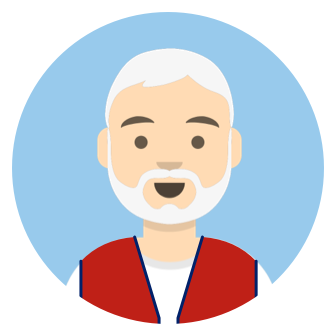Engineered Wood Products
Engineered wood products consist of wood materials and adhesives formed with pressure and heat to create alternatives to solid wood. These products often use wood waste from lumber mills, turning these remnants into useful building supplies. Learn benefits, considerations and applications for four common types of engineered wood products:
- Particle board
- Medium-density fiberboard (MDF)
- Oriented strand board (OSB)
- Plywood
Use this information as a general guide. Features, strength, lifespans and applications vary by factors such as the specific board you’re working with, grading, size, etc. Building codes require specific products for some projects.
What's Particle Board?
Particle board, low-density fiberboard or chipboard consists of sawdust and small wood particles held together with an adhesive. The manufacturing process compresses the material and extrudes it into boards. Particle board has a rough finish, and you may notice gaps in the material when you cut it.
Benefits of Particle Board
- Less expensive than many other types of engineered wood
- Lighter than other types of engineered wood
- Provides some sound insulation
- Relatively easy to cut
- Outer faces resist dents and dings
Considerations for Particle Board
- Weaker than other types of engineered wood
- Vulnerable to warping and swelling due to moisture
- Difficult to paint and stain
Potential Lifespan of Particle Board
2 to 3 years with normal usage
Common Uses for Particle Board
- Cabinetry
- Furniture
- Shelving
- Substrate for countertops
- Underlayment between flooring and subfloors
Particle board isn’t always available in standalone panels but it’s often a component in pre-assembled or ready-to-assemble furniture.
What's MDF?
Medium-density fiberboard (MDF) is made up of wood fibers bound together with resin and wax. While the fibers that make up MDF are readily visible when you cut the board, MDF has a smoother exterior surface than particle board, OSB and some types of plywood.
Benefits of MDF
- Stronger than particle board
- Easy to finish with laminate, veneer (layers cut from real wood) or paint
- Less expensive than plywood
- Easy to cut and shape cleanly
- Consistent texture
Considerations for MDF
-
Highly vulnerable to water damage
- Heavier than plywood
- Doesn’t accept wood stain
Potential Lifespan of MDF
Up to 10 years with normal usage
Common Uses for MDF
- Furniture
- Cabinetry
- Shelving
- Moulding and baseboards
What's OSB?
Oriented strand board (OSB), sometimes called OSB plywood, is made with large flakes or chips of wood. Resin and wax fix the material together and the layers that form the panels are bonded together with their strands at 90-degree angles to one another. The cross-oriented construction adds strength to the panels. OSB panels have coarse, unfinished faces.
Benefits of OSB
- Less expensive than plywood
- Stronger than particle board and MDF
- Similar in strength to plywood
- Tolerates moisture better than particle board and MDF
- Dampens sound
- Paintable with proper priming
Considerations for Using OSB
- Doesn’t sand well
- Not suited to shaping
- Edges often require sealing for moisture protection
Potential Lifespan of OSB
30 to 50 years or more with normal use
Common Uses for OSB
- Subfloors
- Roof decking
- Home sheathing
What's Plywood?
Plywood is manufactured by gluing thin layers of wood veneer together. The grain of each layer or ply is rotated at 90 degrees to the adjacent plies to improve strength and stability. Plywood can have a rough or sanded surface, depending on the type.
Benefits of Plywood
- Stronger than particle board and MDF
- Similar in strength to OSB
- Resists bending and splitting
- Accepts paint or stain with proper preparation
- Resists moisture better than particle board and MDF
- Holds fasteners better than particle board, MDF and OSB
- Available with surfaces that look like solid wood
Considerations for Using Plywood
- Vulnerable to delamination (separation of the plies) due to moisture and high heat
- More expensive than other engineered wood products
- More difficult to shape than particle board and MDF
- Requires veneer edging to hide the plies in some applications.
Potential Lifespan of Plywood
30 to 50 years with normal usage
Common Uses for Plywood
- Subfloors
- Roof decking
- Home sheathing
- Furniture
- Cabinetry
See our plywood guide for details on this engineered wood product, including types, grades, ratings, sizes and more.
Comparing Particle Board, MDF, OSB and Plywood
With the features of each of these four common types of engineered wood options in mind, here are the top performers for several key factors:
- Purchase Price: Particle Board and MDF
- Ease of Shaping: Particle Board and MDF
- Strength and Stability: OSB and Plywood
- Moisture Resistance: OSB and Plywood
- Lifespan: OSB and Plywood
- Versatility: Plywood
Find the Engineered Wood Boards You Need at Lowe’s
Made from waste wood, engineered wood products can be comparatively inexpensive alternatives to solid wood for many uses. Particle board is a lightweight component of many types of pre-assembled and ready-to-assemble furniture. MDF offers a step up in strength and is easy to shape and finish. The cross-oriented layers of OSB and plywood make them the strongest options of the four. OSB and plywood also provide improved resistance to moisture. Plywood is highly versatile, with types suitable for applications ranging from home sheathing to furniture.
Shop Lowes.com for MDF, OSB and plywood for your project. We’ve got types and sizes suitable for many applications. Or stop by your local Lowe’s and talk to a Red Vest associate about your project. They can help you choose the engineered wood product that’s best for your application and give you tips on using it to create a successful, long-lasting project.
